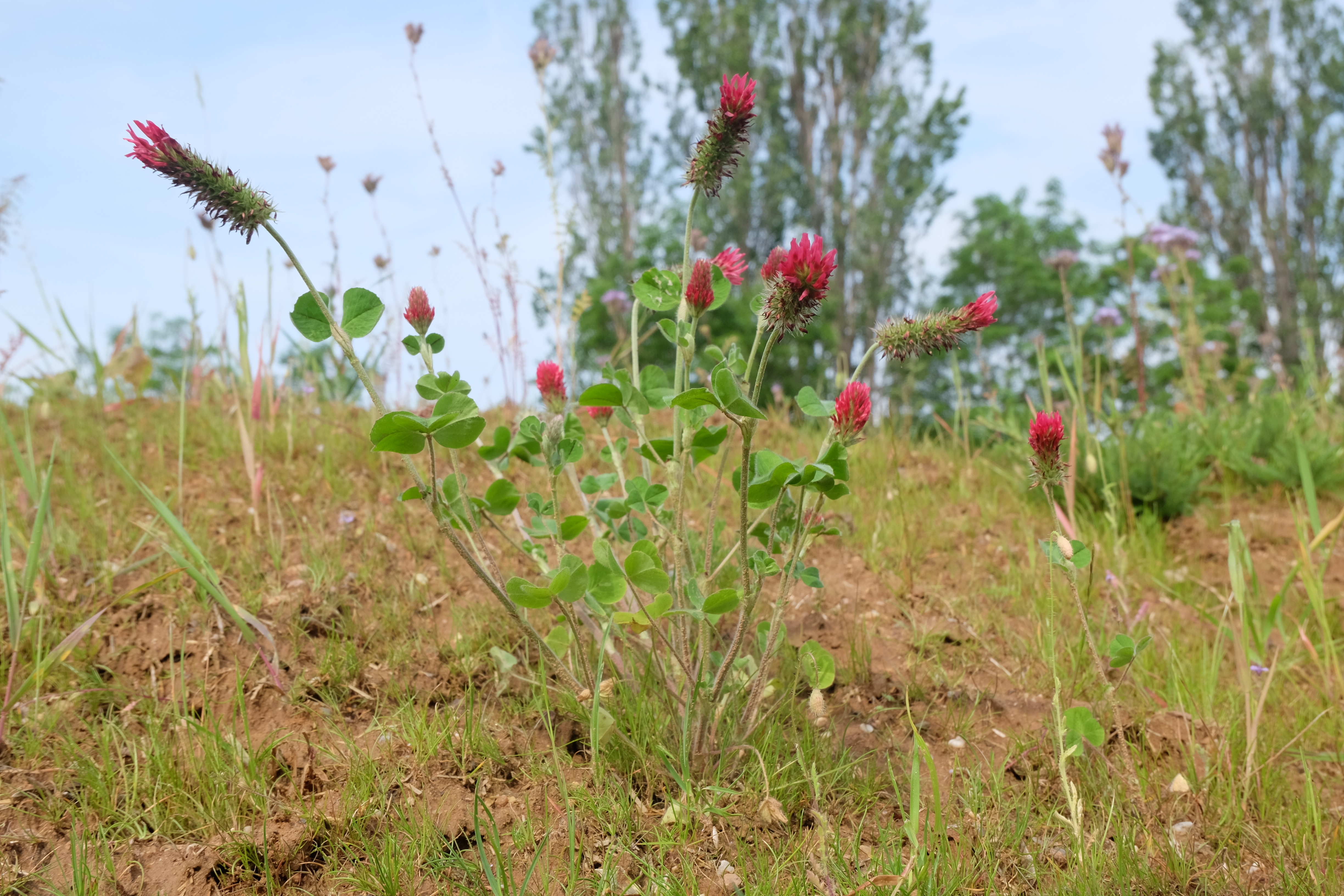Annual clover – a group of annual clover species used as fodder crops, belong to annual legumes.
Annual clovers include species: crimson clover, Persian clover (Shabdar), Alexandrian clover.
Cultivated mainly in the south of Russia and Transcaucasia, but, unlike perennial clover species, they have not received wide distribution in culture.

Source: commons.wikimedia.org©Katrin Schneider / korina.info (CC BY-SA 4.0)
- Forage crops
- Perennial grasses
- Annual grasses
- Annual leguminous grasses
- Common vetch
- Hairy vetch
- Field pea
- Ornithopus
- Annual clover (Русская версия)
- Annual leguminous grasses
Navigation
- Forage crops
- Perennial grasses
- Annual grasses
- Annual leguminous grasses
- Common vetch
- Hairy vetch
- Field pea
- Ornithopus
- Annual clover (Русская версия)
- Annual leguminous grasses
Crimson clover
Crimson clover (Trifolium incarnatum L.) is an annual plant.
The root is taproot, has a large number of lateral roots.
Stems are thick, well developed, soft hairy. Plant height 50-60 cm.
The leaves are large.
The inflorescence is a conical head. The corollas of flowers are bright red.
Crimson clover is a warm and moisture-loving culture. Grows well in aerated soils.
In wet spring conditions, it grows and develops rapidly.
Productivity in Transcaucasia and on the irrigated lands of the south of Ukraine reaches 5 t/ha of hay and 300-500 kg/ha of seeds.
Can be used as a green manure, primarily in horticulture.
Sow in the spring, uncovered. Seeding rate when cultivating for green fodder is 30-35 kg/ha, for seeds 20-25 kg/ha. After sowing, it is recommended to roll the field.
Usually get one cut.
Harvesting for seeds is started when the heads are browned by direct combining.
Persian clover
Persian clover, shabdar, (Trifolium resupinatum L.) is an annual plant, spring or winter type of development.
The root system is medium-sized.
Stems slightly branched, ascending. Plant height 20-30 cm, sometimes higher.
The inflorescence is a spherical head. The flowers are pink.
Honey plant.
The growing season lasts 80-135 days. In the conditions of Central Asia, with early sowing, it blooms in June in spring.
When irrigated, it gives 3-4 cuttings. The yield of hay under experimental conditions in Transcaucasia reached 8-10 t/ha, near Tashkent – 6.5-7 t/ha. High quality hay, protein content 17-18%.
Sowing is carried out early. The seeding rate for irrigation is 15 kg/ha. Sowing depth 1-2 cm. In Transcaucasia, autumn sowing is possible in October.
Harvesting for hay begins at the beginning of flowering. For seeds – when browning 70-80% of the heads in a separate way. In the seed culture, shabdar is mowed with hay mowers and the mass is laid in rolls. When dried, the masses are threshed with a combine. Harvesting for seeds by direct combining is also possible.
Persian clover is well suited for stubble crops. In the Ararat Valley, the yield of green mass during stubble sowing was 24 t/ha (Armenian Research Institute of Animal Husbandry and Veterinary Medicine).
Alexandrian clover
Alexandrian clover (Trifolium alexandrinum L.) is an annual plant.
The root system is well developed.
The stems are straight, branched, plant height 25-60 cm.
The inflorescence is an oval-conical head. Flowers are yellowish white. Weight of 1000 seeds 2.5-3.0 g.
The growing season lasts 90-120 days.
Sow in autumn or early spring. Seeding rate 15-18 kg/ha. Sowing depth up to 2 cm.
Allows you to get 2-3 cuts. Under experimental conditions, yielded a green mass yield of 12 t/ha. The hay and green mass of the Alexandrian clover is well eaten by all kinds of animals. It grows well in the Transcaucasus and the countries of Central Asia.
Sources
Crop production / P.P. Vavilov, V.V. Gritsenko, V.S. Kuznetsov and others; Ed. P.P. Vavilov. – 5th ed., revised. and additional – M.: Agropromizdat, 1986. – 512 p.: ill. – (Textbook and textbooks for higher educational institutions).